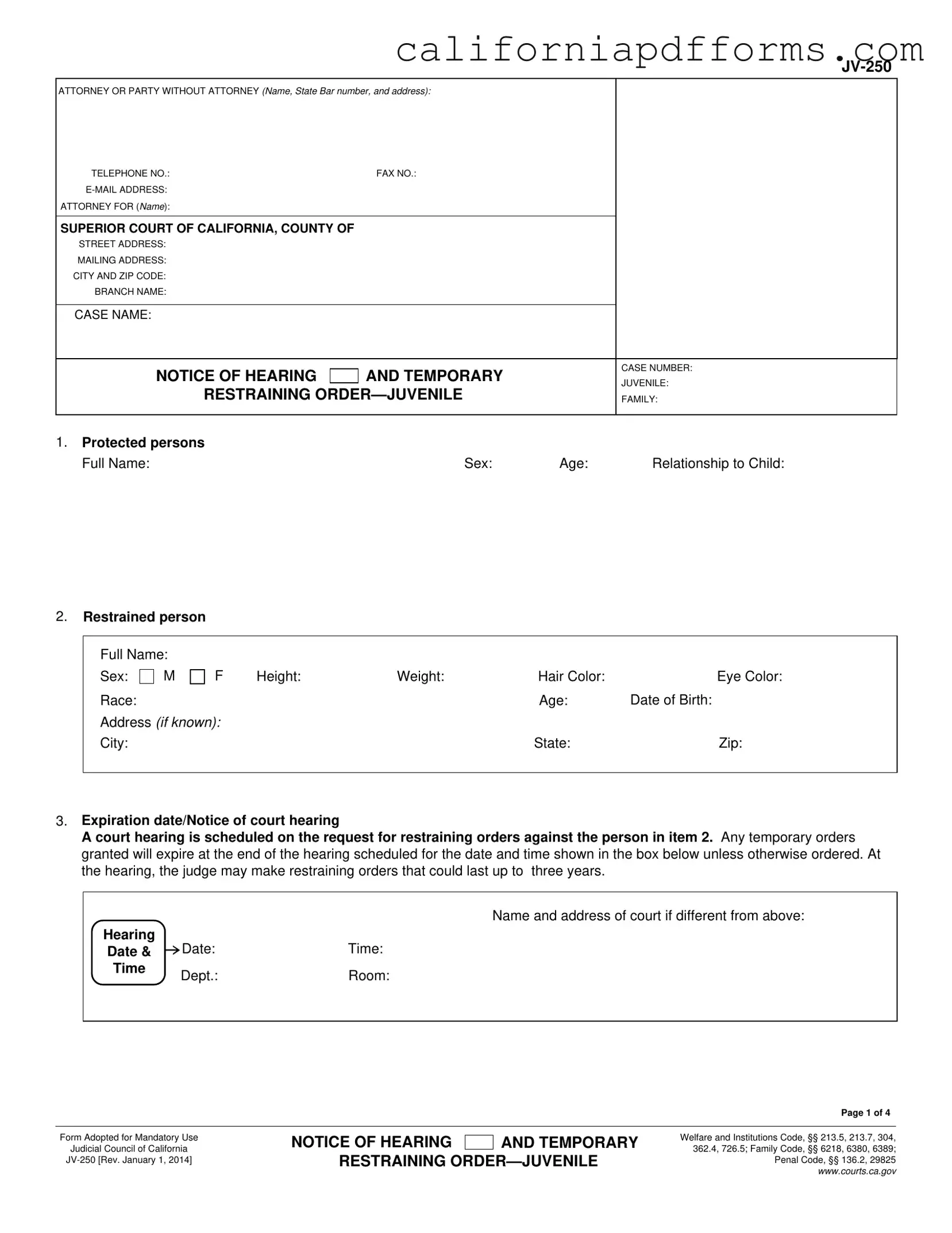Download California Jv 250 Form
The California JV-250 form is a legal document used in juvenile court to request a temporary restraining order. This form outlines the details of the protected and restrained individuals, as well as the conditions of the restraining order and the scheduled court hearing. Completing the JV-250 is essential for ensuring the safety of minors involved in potentially harmful situations.
Take action to protect your rights and those of your children by filling out the California JV-250 form. Click the button below to get started.
Open Your Form Online
